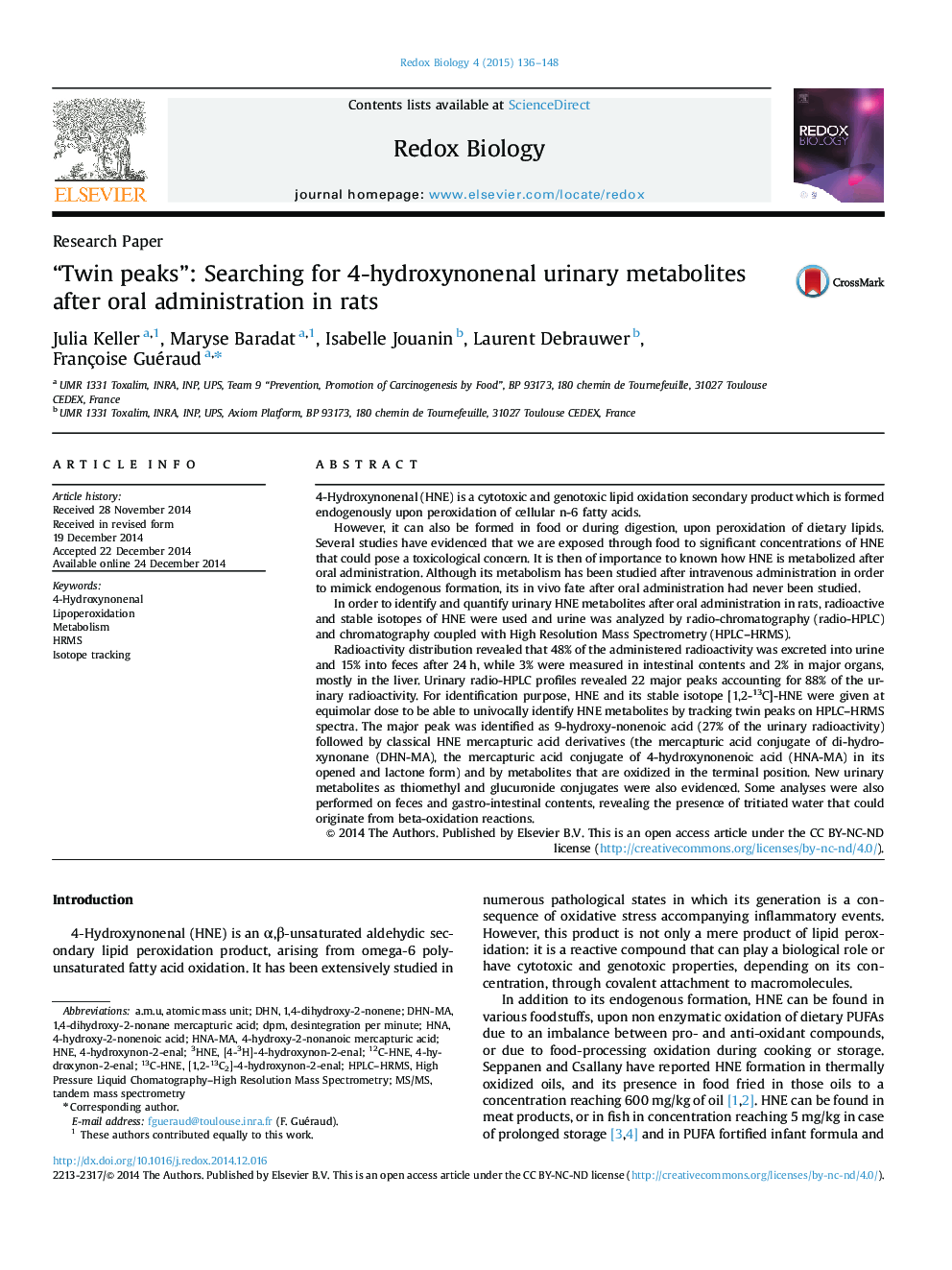| کد مقاله | کد نشریه | سال انتشار | مقاله انگلیسی | نسخه تمام متن |
|---|---|---|---|---|
| 1923089 | 1535846 | 2015 | 13 صفحه PDF | دانلود رایگان |

• Stable isotope tracking was used to study HNE urinary fate after oral administration.
• Twenty-two HNE metabolites were identified and quantified in urine.
• The major urinary metabolite was 9-hydroxy-nonenoic acid.
• Oxidation in terminal position was a prominent biotransformation pathway.
• New urinary metabolites as thiomethyl and glucuronide conjugates were evidenced.
4-Hydroxynonenal (HNE) is a cytotoxic and genotoxic lipid oxidation secondary product which is formed endogenously upon peroxidation of cellular n-6 fatty acids.However, it can also be formed in food or during digestion, upon peroxidation of dietary lipids. Several studies have evidenced that we are exposed through food to significant concentrations of HNE that could pose a toxicological concern. It is then of importance to known how HNE is metabolized after oral administration. Although its metabolism has been studied after intravenous administration in order to mimick endogenous formation, its in vivo fate after oral administration had never been studied.In order to identify and quantify urinary HNE metabolites after oral administration in rats, radioactive and stable isotopes of HNE were used and urine was analyzed by radio-chromatography (radio-HPLC) and chromatography coupled with High Resolution Mass Spectrometry (HPLC–HRMS).Radioactivity distribution revealed that 48% of the administered radioactivity was excreted into urine and 15% into feces after 24 h, while 3% were measured in intestinal contents and 2% in major organs, mostly in the liver. Urinary radio-HPLC profiles revealed 22 major peaks accounting for 88% of the urinary radioactivity. For identification purpose, HNE and its stable isotope [1,2-13C]-HNE were given at equimolar dose to be able to univocally identify HNE metabolites by tracking twin peaks on HPLC–HRMS spectra. The major peak was identified as 9-hydroxy-nonenoic acid (27% of the urinary radioactivity) followed by classical HNE mercapturic acid derivatives (the mercapturic acid conjugate of di-hydroxynonane (DHN-MA), the mercapturic acid conjugate of 4-hydroxynonenoic acid (HNA-MA) in its opened and lactone form) and by metabolites that are oxidized in the terminal position. New urinary metabolites as thiomethyl and glucuronide conjugates were also evidenced. Some analyses were also performed on feces and gastro-intestinal contents, revealing the presence of tritiated water that could originate from beta-oxidation reactions.
Figure optionsDownload as PowerPoint slide
Journal: Redox Biology - Volume 4, April 2015, Pages 136–148